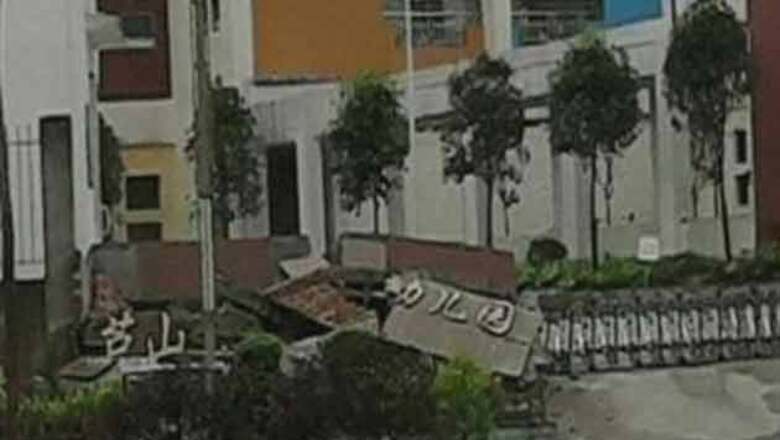
views
Beijing: At least 161 people were killed and more than 5,700 injured when a devastating 7.0-magnitude earthquake rocked southwest China's Sichuan province on Saturday, flattening more than 10,000 homes in a seismic mountainous region that suffered a catastrophic quake in 2008. The quake struck the province on the edge of the Tibetan Plateau at 8.02 am, prompting a major relief and rescue operation in the same area where 90,000 people were reported dead or missing in a 8-magnitude quake in 2008.
Twelve hours after the quake hit Lushan county in the city of Ya'an, the China Earthquake Administration said at least 156 people had been confirmed dead with over 5,500 injured. Several of the injured were said to be in serious condition, Chinese officials said. At least 10,000 homes were destroyed, the Sichuan government said.
Amid rescue operations, a 30-year-old pregnant woman surnamed Zhao was pulled out of the rubble along with a young child, the People's Daily said on its Weibo account. The epicentre of the earthquake was reported to be at a depth of 13 km and was monitored at 30.3 degrees north latitude and 103.0 degrees east longitude. The powerful quake flattened buildings, triggered landslides and disrupted phone and power connections in the historic Lushan county, home of endangered giant Pandas on the foot hills of Tibetan plateau.
To help rescue operations, about 6,000 soldiers and police were heading to the area where five drones were deployed to capture aerial images, state-run Xinhua news agency said. Though a notch less, Chinese earthquake experts said Saturday's quake caused massive destruction as it was a shallow one taking place just below 13 km down the earth, putting a lot of punch in its tremors.
Adapt at dealing with massive earthquakes with skills acquired from both 2008 Sichuan and 2010 Qinghai quakes, China mobilised thousands of rescuers including over 2,500 army troops from provincial capital Chengdu which also felt the tremors in the morning. One military vehicle carrying 17 troops plummeted over a cliff, killing one soldier and injuring seven others.
A total of 264 aftershocks had been monitored, two of which were above 5.0-magnitude, according to the CENC. Ya'an city lies between the Sichuan basin and the Qinghai-Tibet Plateau, regarded as the most seismic active area where the two massive plates at the earth's crest meet. The city has a population of 1.53 million people.
Ya'an is thought to be the origin of the panda species, and the place where the panda was first discovered. In 2006, the area surrounding Ya'an, a natural panda habitat, was listed as a world natural heritage site. Bifeng Gorge base, a panda research base affiliated to the Wolong Giant Panda Protection and Research Center which is only 47 km from the epicenter, has no reports of human or panda casualties, said Yu Xiaoying, a staff member with the Wolong center.
In the later years, most of the Pandas were shifted to Chengdu where their habitat was built. The quake also tested the coordination skills of China's new leaders. While President Xi Jinping ordered troops in the quake-hit zone to make "every possible effort" to rescue, Premier Li Keqiang flew to Ya'an city hours after the earthquake where he personally began coordinating rescue efforts.
Focus was shifted to rescue as many people possible from the debris in the 72 hour golden period. "The current most urgent issue is grasping the first 24 hours after the quake's occurrence, the golden time for saving lives, to take scientific rescue measures and save peoples' lives," Li said.




















Comments
0 comment